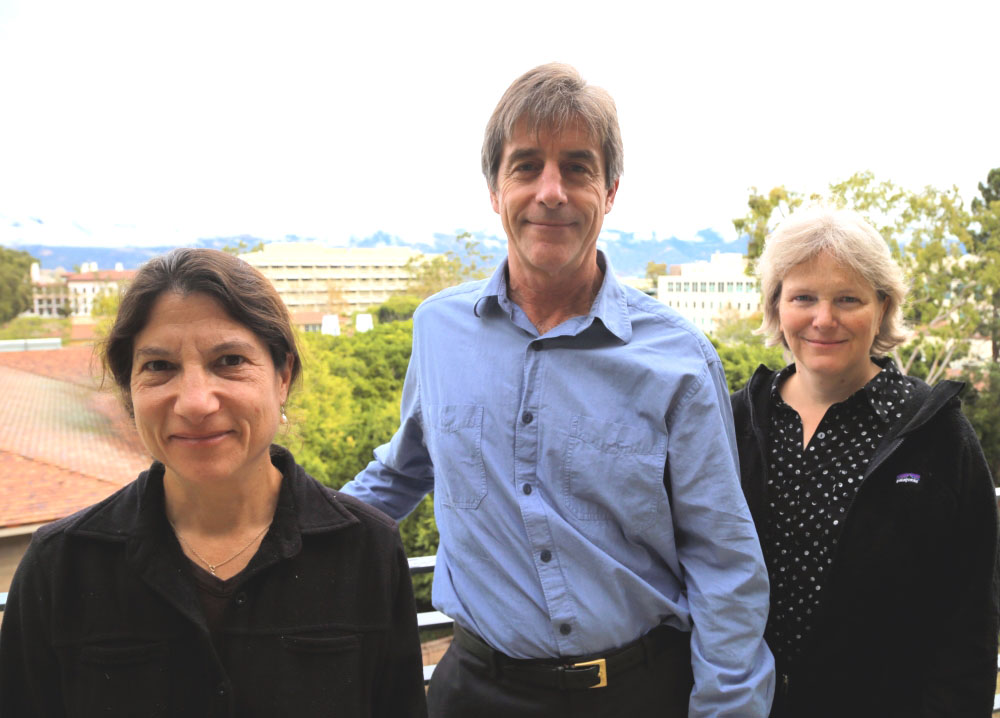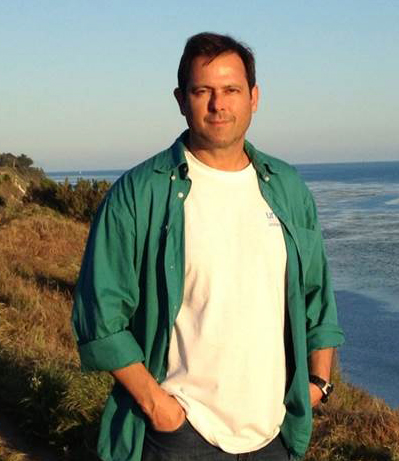UCSB researchers, including four faculty members from the Department of Geography, are participating in a multicampus UC collaboration to study how plants and animals respond to climate change. The following is a science and technology news article from The UCSB Current, written by Julie Cohen, posted December 18, 2014, and with the title above:
More than half a dozen UC Santa Barbara scientists will participate in the newly funded UC-wide Institute for the Study of Ecological and Evolutionary Climate Impacts (ISEECI). The initiative, which was awarded $1.9 million last week as part of the UC President’s Research Catalyst Award, will be led by UC Santa Cruz biology professor Barry Sinervo.
Part of a collaboration involving all nine UC undergraduate campuses, the UCSB researchers will use the UC Natural Reserve System (NRS) to detect and forecast the ecological impacts of climate change in California. The world’s largest system of university-administered natural reserves, the NRS offers a powerful opportunity for faculty members and students to better understand how climate change could affect California ecosystems and the ecosystem services on which people rely.
“The reserves lend themselves to this kind of study,” said Susan Mazer, a professor in UCSB’s Department of Ecology, Evolution and Marine Biology (EEMB). She organized the campus’s contribution to the ISEECI proposal. “They represent a broad spectrum of climatic regimes because they include both latitude and elevation gradients and a variety of plant communities, which range from relatively moist coastal and montane habitats to desert. There is a lot of climatic variation captured by the reserves, which means that we can use this geographic variation as a proxy for climatic conditions that may occur over time.”
ISEECI researchers will assemble historical records, establish a new system for data collection, record the timing of the seasonal cycles of plants and animals and conduct experiments and long-term monitoring studies across the state. “A new approach to research is needed to assess the scope of biotic changes, to devise suitable conservation and restoration responses and to advise policymakers and the public on how to adapt to and mitigate potential threats to natural ecosystems, agriculture, water resources and sustainable development,” Sinervo said. The UCSB group will integrate ongoing studies of climate and of wild populations of terrestrial and near-shore species in the NRS to monitor and to predict their responses to climate change. Mazer’s research group, which records and projects the effects of climate change on the seasonal cycles of native plants in the NRS, also is creating a seed bank to assess microevolutionary responses to climate change. Both endeavors fit nicely into ISEECI’s mandate.
A team headed by Cherie Briggs, who holds UCSB’s Duncan and Suzanne Mellichamp Chair in Systems Biology, is already examining climate change and the emergence of Lyme disease in the NRS as a model for tick-borne diseases. Andrew MacDonald, a Ph.D. student in the Briggs Lab, has been sampling ticks across 17 UC reserves in order to track the prevalence of Lyme disease. As part of the new institute’s work, his research could be expanded to include twice as many NRS sites as well as additional tick-borne diseases. “Tick-borne pathogens have huge potential to be affected by climate change because the prevalence of the disease depends on what mammals are there and what climatic conditions are present in the location,” Briggs said. “Because ticks spend most of their time off of their hosts in leaf litter, they are very affected by desiccation and temperature.”
Frank Davis, a professor at UCSB’s Bren School of Environmental Science & Management, studies the effects of climate change on tree establishment and growth in the southern Sierras and the Tehachapis, where no UC reserves exist. “Part of what we can do with this project is take our collected records of the microclimates at these places, as well as plant survival and growth, and make sure those data are brought into an NRS-focused effort,” Davis explained. “ISEECI is about networking places and networking people to do this kind of more integrated assessment of climate change biology in California.”
Additional UCSB faculty members proposed a second set of projects examining large-scale geographic (and temporal) patterns in climate, terrestrial vegetation and abiotic marine conditions. These would use remote sensing or climate modeling to evaluate historical changes in climate or plant community composition, to track or to project past and future extreme weather conditions and events and to forecast future changes in vegetation, marine biochemistry and ocean acidification. This research would also look at the frequency of extreme weather events in response to longer-term changes in climate.
Charles Jones and Leila Carvalho, associate professors in UCSB’s Department of Geography and researchers at its Earth Research Institute, seek to explore climate change impacts on biotic systems, with an emphasis on detecting and forecasting of extreme weather patterns and events. Dar Roberts, a professor in UCSB’s Department of Geography, hopes to examine how climate change affects community composition and structure across the NRS; and EEMB professor Gretchen Hofmann plans to investigate ocean acidification and hypoxia in the NRS marine reserves.
Although many in-depth studies have documented climate impacts on the NRS, they largely have been done independently, with results that are difficult to compare among studies. ISEECI will pursue a coordinated approach across broad geographic scales. Researchers will develop models to predict future changes to ecosystems and potential impacts on ecosystem services that might threaten the capacity of Californians to adapt to a changing climate.
“We hope new collaborations that we don’t foresee will also emerge as more people with a similar sensibility use ISEECI’s infrastructure and focus in on the ecology and evolution of species that are widespread across the reserves,” Mazer said.


.jpg)

.jpg)
.JPG)
